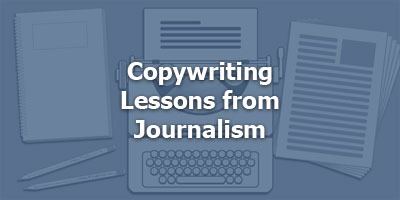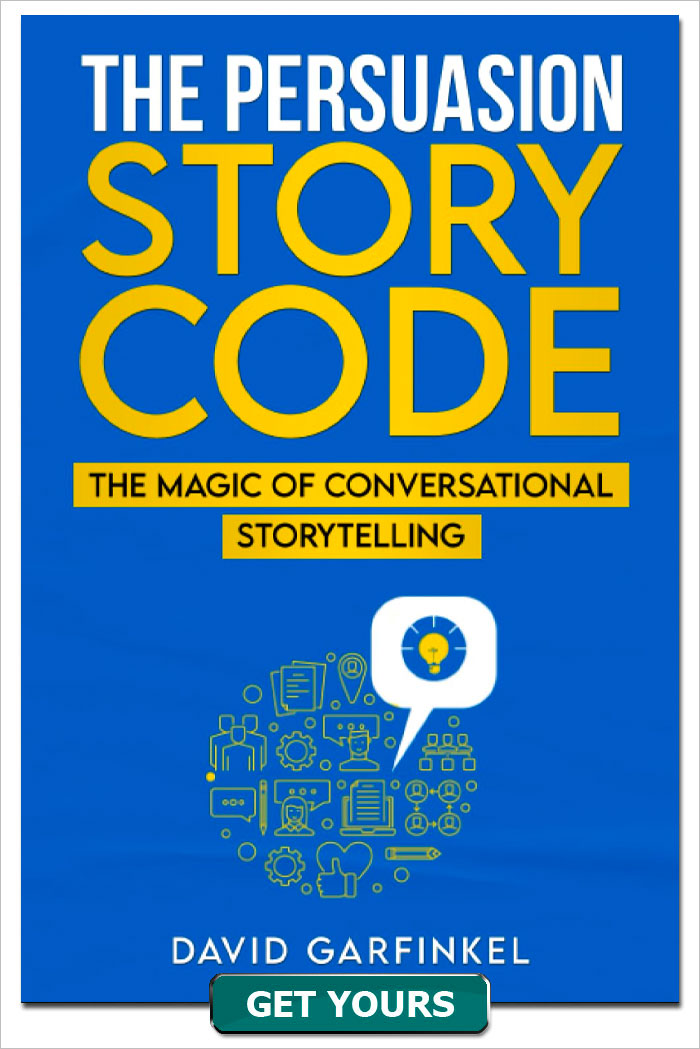Episode 021 - Copywriting Lessons from Journalism
Published by: David Garfinkel on 09-11-2017
Tweet
When I first started writing copy, it looked so easy. I had been an award-winning journalist and had nabbed the San Francisco Bureau Chief job for a large news organization.
I thought it would be breeze… but that wasn't how it happened. Not at first.
Copy looked very simple and straightforward to me, and, on the surface, a lot like news stories. And I was good at writing those fast!
Now, the more I got into writing copy, the more I found differences that weren't obvious to me when I first started writing copy.
Today we'll talk about what I kept and what I threw away. Things that don't work and things that do.
But first, I need to tell you something about copy.
Copy is powerful. You're responsible for how you use what you hear on this podcast. Most of the time, common sense is all you need. But if you make extreme claims… and/or if you're writing copy for offers in highly regulated industries like health, finance, and business opportunity… you may want to get a legal review after you write and before you start using your copy. My larger clients do this all the time.
Advantages of journalism
- despite current charges "fake news," high historical credibility. Journalists play by the rules, which are unique to journalism. The journalistic process, because it needs to happen so fast, is not 100% accurate. But it's thorough and responsible, most of the time. As a result, most people believe what they read in the paper or see on TV.- advertorial / native advertising: "Borrowed credibility" (Gene Schwartz) – the format lends itself to credibility. 5x more ad readership when in editorial format (Ogilvy)- facts make things believable. Journalists are trained to recognize and separate facts from opinions. This is different from bias. Ben Shapiro, of dailywire.com, yesterday on Joe Rogan: "Something can be true, and biased." Sometimes tricky for readers to separate facts from opinions in the final product. But a good journalist will confirm facts by the rules of journalism, and that makes stories believable. Being believable/believed is every advertiser's problem and what every advertiser wants. (James Webb Young, diary of an ad man).
Journalistic techniques you probably shouldn't use in your copy:
big picture: except for product reviews, most of what you'll find in a paper or on a website will not be suggesting that the reader do something, like copy does. It will usually be entertainment and information. Sometimes, more entertaining, sometimes more informative. In almost all cases, that doesn't work in copy, because you need to sell, too.
Technique not to use: entertaining, silly – from a biz point of view, news stories and features are there to surround the ads in the paper. That's how newspapers make money. Rarely is a news story designed to persuade a reader to take a specific action.
Technique not to use: impressionistic writing (a certain amount of mind-reading -- as a copywriter, you need to base what you write onresearch, and solid experience) Journalists have license to do this. It will help make a story more entertaining, but it can backfire on you if you use the same technique in copy. People will be very skeptical if you describe someone in an ad the way a good magazine or newspaper writer does in a
Technique not to use: inverted pyramid. Wik: "Communication of major details before minor details." So readers can know all they need to know in the first paragraph. That means they stop reading. Great for informing and entertaining (news) … not so good for copy. A better big-picture model for copywriting is: promise/claim, proof, call to action
How journalists work, and how copywriters can borrow their techniques
- Interviews
- if you're a freelance copywriter, interview the owner/founder/client
- the rest are for business owners and copywriters:
- team that developed the product
- if info-product, interview the expert
- interview customers, find out why they bought
- note: an interview is much more powerful (and truth-revealing)
than a survey- Confirm facts; skepticism
- Ugly old saying among journalists: "If your mother says she loves you, check it out."
- You have to be diplomatic, not prosecuting attorney/hard-boiled reporter, when investigating. But get to the bottom of things. Not to advertise what's wrong with the product, but to know what you're working with so you don't eventually get yourself/your client in trouble by including untrue things in your copy.
- Quote sources. Journalists have "on the record/off the record." Kind of touchy to do "off the record" in copy. But on the record, with a written release, can add tremendous credibility to an ad.
Always start with a hook in the lede. That's what journalists are taught to do. And if their lead sucks, their editor will probably kick it back to them, or kill the story altogether. Here are a few leads from recent news stories:
Associated Press: CHICAGO (AP) — By extracting Chicago money from a measure all Illinois public schools needed to get state funding this fall, Gov. Bruce Rauner reignited an age-old but divisive political strategy on a new front.
Arizona Republic: Joshua Schwabenbauer was only 26 when he died in a tragic boating accident. His organs were donated and gave four people a second chance at life. The woman who received his heart, Adelia Harris, 24, met his family for the first time.
TMZ: Romeo Santos not only ripped off a musician's song and released it as his own, but he didn't even bother to change the name ... according to a new lawsuit.
Nazim Guity claims he wrote a tune in 2011, titled "Eres Mia," and worked with a music producer and recording studio to mix and record the track ... and copyrighted the song in March 2014.
--
Those are interesting ledes. Good for info and entertainment, but not good setups for a sales pitch. Still, notice how they grab attention and will make you want to keep on reading – if you're interested in Illinois politics (first one), if you like uplifting human interest stories (second one), and if you're interested in the music and musicians mentioned in the lede (third one).
Zeitgeist / top of mind. Journalists need to keep up to date on the news overall, and will sometimes refer to other things going on as a jumping off point in a story. Example, during the Olympics, a business has record sales. A newspaper could say, "ABC company earned itself a gold medal in June for having the best second quarter in its 14-year history." Well, the business didn't really earn a gold medal. It's a reference to the Olympics, which is on everyone's mind.Let's say you had a green thumb with all the vegetables in your garden at home and you had an info-product for other home gardeners.Someone writing about you could start the copy:
"I don't know if they give out gold medals for gardening, but if they did, Nathan Fraser would easily get all of them. And I just found out his ready to share his world-class gardening secrets with the public!" That could be a good lead for a sales piece, and it would tap into the top-of-mind thoughts of the Olympics. Handy technique!
Keywords: journalism copywriting david garfinkel









